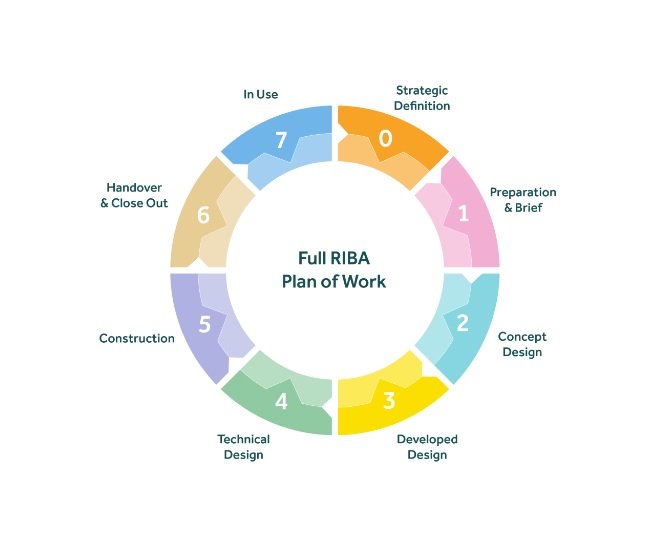
Client Guide Checklist: RIBA Plan of Work 2020
-
Strategic Definition and Briefing ( RIBA Stage 0)
The RIBA Plan of Work 2020 outlines the various stages of a property or real estate project. While stages may overlap and time pressures can compress the schedule, it is crucial to follow each phase diligently.
Key Phases
Purpose: To understand and articulate the goals of the project.
Client Input:
Practical Goals:
Example: Double the floor space.
Example: Rationalize the workplace and introduce hot desking.
Aesthetic Goals:
Determine the general level of finishes.
Differentiate between front of house (high-end finishes) and back of house (economical finishes).
Example: Suite of meeting rooms with high-end finishes for visiting clients.
Example: Economical finishes for rear of house areas.
Considerations: Goals should be guided by budget and building use.
-
Preparation and Brief (RIBA Stage 1)
Purpose: To prepare the project brief and assemble the right team.
Client Input:
Provide detailed information about your business and building needs.
Specify any requirements for specialist services (e.g., mechanical and electrical services).
Team Selection:
The choice of architect depends on the type of work:
Office refurbishments require different expertise compared to residential refurbishments.
Specialists (e.g., mechanical and electrical designers) typically work under the architect or designer.
-
Tips for Each Phase
Strategic Definition: Engage in detailed discussions to clearly define the project’s purpose and objectives. Ensure alignment on both practical and aesthetic goals.
Briefing: Document the agreed-upon goals and ensure all stakeholders understand and agree with the project direction.
Team Assembly: The better SW1 Surveyors understand your business and building needs, the easier it is to put together the right team for your project.
Remember
Overlapping stages and time constraints are common.
Strategic definition and briefing set the foundation for a successful project.
Clear communication of goals helps in achieving the desired outcome within budget and use-case parameters.
Selection of the appropriate architect and specialists is crucial and should be tailored to the specific type of refurbishment (office vs. residential).
By following this checklist, clients can effectively contribute to the strategic definition and briefing phases, ensuring a solid foundation for the project and the assembly of the right team at RIBA Stage 1.

